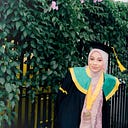Review: “Nyanyian Angsa” by W.S. Rendra, Humiliating Woman through Phallogocentrism
Literature is an expression of social phenomena that is conveyed through words spontaneously to objectify or subjectify something. From those two ways, a literary work could commonly signify the author’s liberated stance. As Nurrachman (2023) stated a (postmodern) writer or artist is in a philosopher’s position: the texts he/she writes and the works he/she produces, principally, cannot be governed by predetermined rules, and cannot be judged by a decisive judgment by applying categories that are already known in texts or works.
One of the genres of literary works is poetry, consisting of several elements for instance lines, stanzas, rhymes, rhythm, and delivered through figurative language with exhaustive meaning. Hence, the object of this analytic essay is the poem “Nyanyian Angsa” written by W.S. Rendra in 1965. This eighteen-stanza poem describes the misery and adversity of a prostitution worker, Maria Zaitun.
Read the poem here: https://indosasters.org/nyanyian-angsa/
Utilizing Hélène Cixous’ post-feminism approach, this analytical essay aims to reveal the idea of phallogocentrism in the “Nyanyian Angsa” poem. Phallogocentrism is an ideology that designs knowledge centered on men because they had phallus or penis as a representation of pen. Moreover, phallogocentrism is demonstrated through writings that objectify women awfully and as victims of male sexual satisfaction. As the quotation below:
Sempoyongan ia berjalan.
Badannya demam.
Sipilis membakar tubuhnya.
Penuh borok di klangkang
di leher, di ketiak, dan di susunya. (line 24–28)
The author describes Maria Zaitun’s downcast condition bluntly and depresses her self-image by sequentially mentioning indignity words on women’s privacy such as ‘sipilis’, ‘penuh borok’, ‘klangkang’, and ‘susunya’. Through his perspective as a male writer, he depicts the women’s image cruelly about Maria Zaitun’s misery. Cixous (1976), in her essay “The Laugh of the Medusa”, worries by stating, “Writing has been run by a libidinal and cultural –hence political, typically masculine –economy; that this is a locus where the repression of women has been perpetuated, over and over, more or less consciously, and in a manner that’s frightening since it’s often hidden or adorned with the mystifying charms of fiction.”
In the following lines, the author also portrays Maria Zaitun through pathetic dictions also by stereotyping women as undeniably weak and powerless. Such as “Ia tak bisa bayar. Dan lagi sudah jelas ia hampir mati.” (line 56) and “Koster meneliti tubuhnya yang kotor dan berbau.” (line 80).
Furthermore, Cixous intends to against phallogocentrism by creating a revolution of female writing that is no longer ‘theoretical’ or political, is never simple or linear or ‘objectified’, and is generalized. As to against the quotation below that shows how women are slovenly objectified.
Dan dengan rasa jijik
ia tusukkan pedangnya perkasa
di antara kelangkangku. (line 167–169)
In addition, in the poem of “Nyanyian Angsa”, the author shows his phallogocentrism by illustrating a comparison between women and men. The women’s image is presented poorly and repugnantly for example “Pelacur yang sengsara. Kurang cantik dan agak tua.” (line 15–16), “Pelacur yang takut dan celaka.” (line 65), “Pelacur lemah, gemetar ketakutan.” (line 144), and “Pelacur yang kalah. Pelacur terhina.” (line 172–173). Meanwhile, the men’s image is illustrated pleasingly and powerfully, for instance “Malaikat penjaga Firdaus. Wajahnya tegas dan dengki.” (line 9–10), “Malaekat penjaga firdaus wajahnya tampan dan dengki.” (line 163–164), and “Lelaki itu menyeberang kali. Ia tegap dan elok wajahnya.” (line 229–230).
The examples above are phallogocentrism forms that reveal the true identity of men, narcissistic creatures. According to Cixous, the entire history of writing is confounded with one of the reasons, the privileged alibis. Men are known for self-admiring, self-stimulating, and self-congratulatory phallocentrism.
Sources:
- Cixous, H. (1976). The Laugh of the Medusa. In K. Cohen & P. Cohen (Eds.), Signs: Journal of Women in Culture and Society (Vol. 1, Issue 4). https://doi.org/10.1086/493306
- Hanafi. (2015). “Hanafi Menyanyikan Zaitun” for the Exhibition at Gedung Indonesia Menggugat (GIM).
- Nurrachman, D. (2023). Critical Theory: Teori-teori Kritik Sastra dan Budaya Kontemporer (Y. Sudarisman (ed.)). CV. Putra Surya Santosa.
